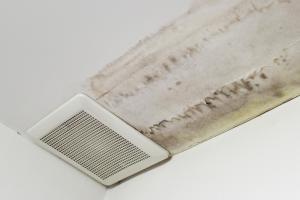
A Step-by-Step Guide to Professional Mold Remediation
Earl Carr, Jr., president of Gulf 52 in Hammond, Louisiana, highlights the importance of professional mold remediation. “Mold remediation is not just about removing visible mold. It’s a comprehensive process designed to identify the root cause, eliminate contamination, and restore a safe environment for occupants,” says Carr.
Understanding the Mold Remediation Process
Professional mold remediation is a multi-step approach aimed at addressing both the symptoms and the underlying causes of mold growth. Each step is crucial to ensure the property is safe and mold-free.
1. Inspection and Assessment
The remediation process begins with a thorough inspection and mold assessment. Trained specialists use advanced tools to identify the type and extent of mold growth, including hidden mold that may not be immediately visible. This step also involves determining the source of moisture that allowed mold to develop, such as leaks or high humidity.
2. Containment
To prevent mold spores from spreading to unaffected areas, containment measures are put in place. This often includes physical barriers, such as plastic sheeting, and negative air pressure systems that keep airborne spores confined to the contaminated area.
3. Air Filtration
High-efficiency particulate air (HEPA) filters and air scrubbers are used to capture mold spores circulating in the air. These devices help improve indoor air quality and reduce the risk of spores settling in other parts of the property.
4. Removal of Contaminated Materials
Porous materials like drywall, insulation, and carpets that are heavily affected by mold are carefully removed and disposed of according to environmental regulations. Non-porous materials may be cleaned and treated to remove mold completely.
5. Cleaning and Disinfection
Specialized cleaning solutions are used to remove mold from surfaces and disinfect the area. This step ensures that any remaining spores are eliminated and reduces the likelihood of mold regrowth.
6. Addressing Moisture Issues
Remediation is incomplete without addressing the moisture problem that caused the mold. This step may involve repairing leaks, improving ventilation, or installing dehumidifiers to maintain proper humidity levels.
7. Restoration
The final step in mold remediation is restoring the property to its original condition. This can include replacing drywall, repainting walls, and installing new flooring. Restoration ensures the space is functional and safe for use.
Why Professional Remediation Is Necessary
Mold remediation requires specialized training, equipment, and safety protocols to ensure effective results. Attempting to handle mold without professional assistance can lead to:
Incomplete Removal: Mold can regrow if not properly addressed, especially in hidden areas.
Health Risks: Disturbing mold without proper containment can release spores into the air, exacerbating respiratory issues for occupants.
Cross-Contamination: Without containment, mold spores can spread to other areas of the property.
Professionals follow established guidelines and use advanced techniques to address these risks while ensuring a thorough and safe remediation process.
Health and Structural Risks of Mold
Unchecked mold growth poses both health and structural challenges. Mold spores can trigger allergies, asthma, and other respiratory conditions, particularly in individuals with preexisting health concerns.
Structurally, mold can weaken building materials like wood and drywall, leading to costly repairs and compromising the safety of the property. Early intervention through professional remediation helps mitigate these risks and prevent further damage.
The Role of Technology in Mold Remediation
Advancements in technology have significantly improved the effectiveness of mold remediation. Infrared cameras and moisture meters allow professionals to identify hidden mold and track moisture sources with precision.
HEPA filters and negative air machines enhance air quality during remediation, ensuring a safer environment for both workers and occupants.
These tools, combined with expert knowledge, enable professionals to deliver comprehensive solutions that address both immediate and long-term concerns.
Preventing Mold Recurrence
While professional remediation addresses existing mold, preventing future growth is equally important. Property owners can take proactive measures to reduce the likelihood of mold recurrence, including:
Controlling Humidity: Keeping indoor humidity levels below 50% helps prevent mold-friendly conditions.
Fixing Leaks Promptly: Addressing plumbing or roof leaks immediately reduces moisture buildup.
Improving Ventilation: Proper ventilation in bathrooms, kitchens, and basements reduces moisture levels.
Regular Inspections: Periodic checks for signs of moisture or mold can help identify issues early.
A Commitment to Safe, Effective Remediation
Gulf 52’s comprehensive mold remediation services focus on restoring properties to safe and healthy conditions while addressing the root causes of mold growth. By following a structured process and utilizing advanced tools, the team ensures long-lasting results that protect both the property and its occupants.
Morgan Thomas
Rhino Digital, LLC
+1 504-875-5036
email us here
Visit us on social media:
Facebook
Distribution channels: Building & Construction Industry, Culture, Society & Lifestyle, Environment, Natural Disasters, Real Estate & Property Management
Legal Disclaimer:
EIN Presswire provides this news content "as is" without warranty of any kind. We do not accept any responsibility or liability for the accuracy, content, images, videos, licenses, completeness, legality, or reliability of the information contained in this article. If you have any complaints or copyright issues related to this article, kindly contact the author above.
Submit your press release

